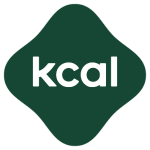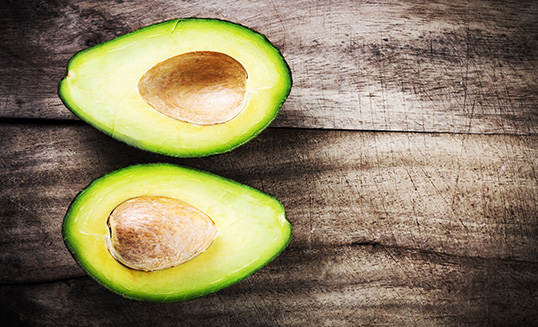Dieting has evolved over the years, and not necessarily for the better. At one time, fat was seen as the enemy, and as such diets that were devoid of fat and high in carbs became a fast growing trend out of nowhere. Fast-forward to now, and that approach has pretty much been wiped out, as we now realize the many benefits of fat, and their important involvement in the body’s metabolic processes. Contrary to popular belief we now know – eating fat doesn’t make you fat! And in fact, it’s eating too many carbs can cause not only weight gain, but a plethora of health issues. The confusion over fat, often comes with understanding how much fat is enough and what sources of fat are best to support health, weight loss and a lean body composition. Keep reading to find out more on this healthy macronutrient.
Why The Low Fat Craze?
The low fat diet became popular in the early part of 2000 from a cohort of studies revealing that a diet high in fat leads to higher cholesterol levels and a greater risk of developing heart disease. Without further thought, low fat dieting swept over the world. However, instead of just lowering fat and avoiding certain bad fats, this lead to a fade in no-fat diets and processed, packaged low fat, high carbohydrate food products to help feed this new popular diet craze.
This massive swing in dieting practices is now believed to be the root cause of the explosion of diabetes, obesity and metabolic disorders that have overcome the nation. Diets that are high in carbs and low in fat have been shown to lead to insulin resistance, increases in triglycerides and cholesterol, increased risk of diabetes and, ironically, an increased risk of heart disease—the very thing that the low fat diet was trying to avoid.
Why is Fat Important?
One thing that the low fat diet craze taught us is that moderation is the key to success of any diet. Cutting fat completely from the diet is not the answer. Fats are important in the regulation of hormones, helping to preserve lean muscle, keeping our brains functioning, maintaining healthy skin and the absorption of fat-soluble vitamins. However, just like low fat diets are bad, so are high fat diets! High fat, high protein diets have been shown to lead to greater inflammation and more oxidative stress, despite resulting in a leaner body composition.
The key is to get the right fats and in right amount. If you are following a high protein diet that is low in carbs and higher in fat, consider adding carbs from sources such as fruits and vegetables, which provide a rich source of antioxidants, vitamins, minerals and nutrients that can reduce oxidation and provide a great source of fiber.
How Much Fat Is Enough?
A healthy diet that supports weight loss, a positive change in body composition – less body fat and more lean mass, while also providing energy, should be based on a nutritional program that delivers enough of all three macronutrients. Aim for a diet that is high in protein, providing roughly 40% of your calories, along with a moderate amount of both carbs and fat, each providing up to 30% of your daily calories. Not sure, how much fat that is? Remember, fat is calorie dense providing 9 calories per single gram, more than double that of carbs or protein which each only provide 4 calories per gram.
Count your fat calories from all foods, especially from your protein. Red meats and fatty fishes can deliver a hefty serving of fat per serving. A small 100 g serving of salmon or steak both provide 13 g of fat. From your daily intake of fat – only 10% should come from saturated fat. Your activity level, your metabolism, and how your body utilizes carbs will ultimately determine your specific macronutrient ratios.
The Good Fats
Unsaturated fats are considered the ‘healthy or good fats’, which are always liquid at room temperature. There are two types of good fats: monounsaturated and polyunsaturated, which include essential fats. Monounsaturated fats are produced by the body and are found in fats of both plant and animal origin. Animal sources of monounsaturated fats can be found in beef, lamb, chicken, turkey, dairy products, eggs and some fish. Plant sources of monounsaturated fats include almonds, peanuts, olives, walnuts, avocadoes, pistachios, and macadamia nuts.
The other type of unsaturated fat is polyunsaturated fatty acid or PUFA, which come from plants, vegetables and fish and are considered essential fats. Essential Fatty Acids, or EFAs, have a similar function and need like vitamins. EFAs cannot be made by the body, and therefore, must be obtained from the diet. Omega fats are EFAs. The two major omega fats are omega-6 and omega-3. Although both are essential, getting enough omega-3 can be more challenging than omega-6. Most people consume much higher amounts of omega-6 than omega-3, since omega-6 is widely available. However, nowadays, Omega-3 is also widely available in fortified foods like eggs, juice and certain oils. The key is balancing out this ratio. High doses of omega-3 can be just as damaging as high doses of omega-6, especially if the source is unstable. Omega-3 fats have fragile carbon double bonds that can cause tissue damage and long-term increased disease risk. Natural sources of essential fatty acids can be found in chia seeds, flax seeds, fatty fish, and tahini.
The Bad Fats
Saturated fats are the bad fats and when eaten in large quantities, can be harmful to your health. Saturated fats have a tendency to raise levels of bad cholesterol, low-density lipoprotein or LDL, but that doesn’t mean we should avoid it all together. Cholesterol helps to build and maintain the fluidity of cell membranes, determines what substances can pass in and out of the cells, is important for the metabolism of fat soluble vitamins, insulates nerve fibers and most importantly, is involved in the production of hormones including testosterone and estrogen. Maintaining a diet that provides majority of fat from unsaturated sources ensures LDL is low and the good cholesterol HDL remains high. Foods like red meat, cashews and whole eggs are sources of saturated fat.
The Ugly Fats
When it comes to fat, there is only one you absolutely must avoid – trans fats! Also known as hydrogenated fats, these fats are manmade and are a common ingredient found in many processed foods including packaged goods, un-natural peanut butter and baked goods. Trans fats have a significant adverse impact on health, and have been shown in research to raise cholesterol levels, lower good cholesterol levels, decrease testosterone and insulin response, adversely affect liver enzyme activity and impair the immune system. They’ve been linked to heart disease, cancer and other diseases associated with aging. Although most countries have ban the use of trans fats for commercial baking and in processed foods, not all have. Be sure to read labels, or ask prior to purchase, however if following a diet that is based on only fresh and whole foods, then it’s unlikely that you will be getting any of these ugly fats to begin with!
What Fats Should Be in Your Diet?
Consider using a wide variety of unsaturated fats in your diet from a wide variety of sources to avoid getting more of one type of fat than another. Good sources of fat include nuts, natural nut butters that do not have added ingredients such as palm oil, coconut oil, avocado, olives, or seeds such as flax. Be sure to also include other sources of fat in your diet such as extra lean red meat, whole eggs or fatty fish like salmon.







